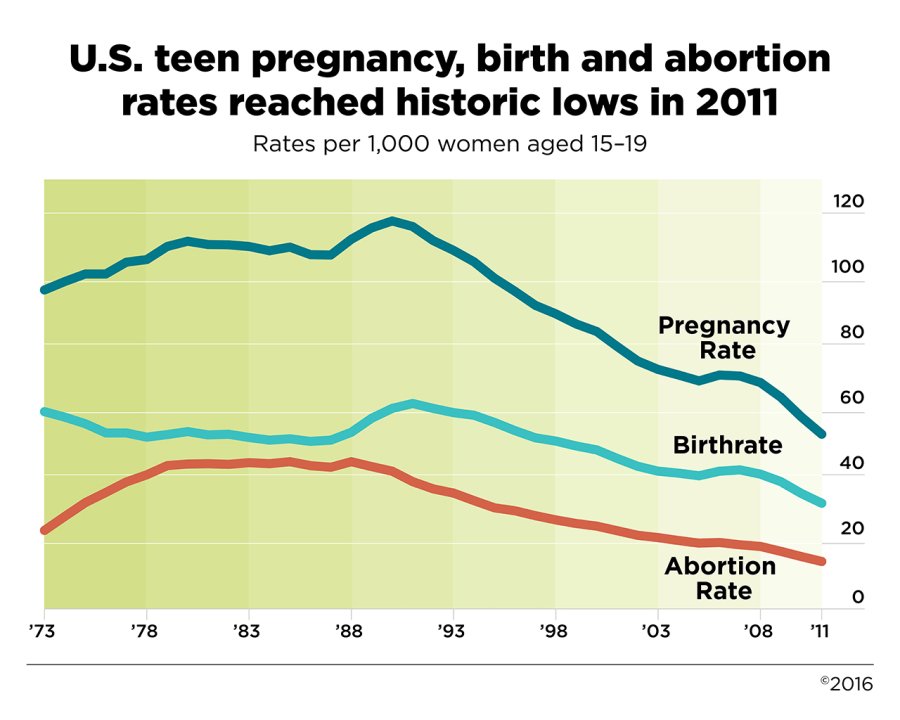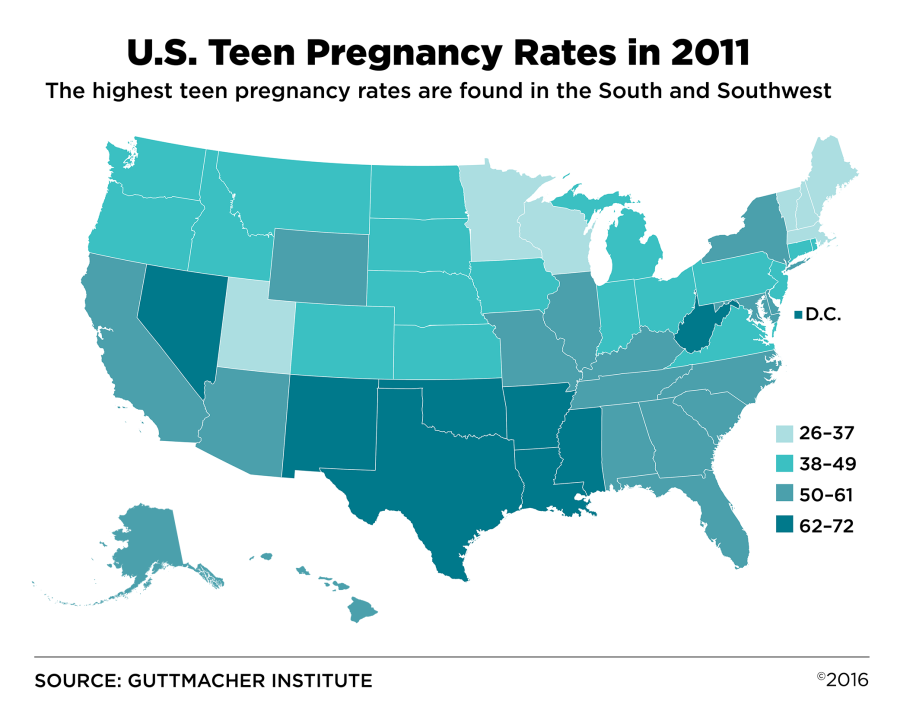This publication has been updated. Please see here for the latest version.
Teen pregnancy, birth and abortion rates in the United States all reached new historic lows in 2011, according to two new analyses (national and state) from the Guttmacher Institute. In 2011, about 553,000 pregnancies occurred among teen women aged 15–19, for a national rate of 52.4 pregnancies per 1,000 women in that age-group. This is the lowest rate observed in the last four decades, and it marks a 23% decline from the 2008 teen pregnancy rate of 68.2. National teen birth and abortion rates have also declined sharply: in 2011, there were 31.3 births per 1,000 teen women (down from 40.2 in 2008) and 13.5 abortions per 1,000 teen women (down from 18.1 in 2008).
Rates are also continuing a long-term decline at the state level. In 2011, the states with the highest teen pregnancy rates were New Mexico, Mississippi and Arkansas. The lowest teen pregnancy rates were observed in New Hampshire, Minnesota and Vermont. The authors note that disparities in teen pregnancy rates and outcomes between states are likely due to a variety of factors, including differences in state demographic characteristics, the availability of comprehensive sex education, and knowledge about and availability of contraceptive services.
"Teens have become more successful at preventing pregnancy than they were in the past. Sexual activity has remained constant among this age-group, but birth and abortion rates have both decreased dramatically," says lead author Kathryn Kost. "The available evidence suggests that increased contraceptive use is the primary driver of this decline."
Although rates of teen pregnancy and its outcomes have declined among all racial and ethnic groups, wide disparities persist. In 2011, pregnancy rates among non-Hispanic black teens (92.6 per 1,000) and Hispanic teens (73.5 per 1,000) were more than double the pregnancy rate for non-Hispanic white teens (35.3 per 1,000). Similarly, teen birth and abortion rates differ substantially across racial and ethnic groups. These disparities mirror those found in unintended pregnancy rates among all U.S. women of reproductive age, which are several times higher among women of color than among white women.
"Though declines in teen pregnancy, birth and abortion rates were observed among all groups, large disparities by race and ethnicity still exist at the national and state level," comments Guttmacher policy expert Heather Boonstra. "It’s crucial that teens in all racial and ethnic groups, and in all geographic areas of the United States, are able to access the information and services they need to prevent unwanted pregnancies and achieve their goals."
Researchers analyzed birth data from the National Center for Health Statistics and abortion data from the Centers for Disease Control and Prevention and Guttmacher’s Abortion Provider Census to calculate the 2011 teen pregnancy rate. Population data are from the U.S. Census Bureau. The Guttmacher Institute regularly updates teen pregnancy statistics as part of our ongoing surveillance of pregnancy statistics for the United States. The methodology has been updated from previous reports to ensure the most accurate data; therefore, previous years’ statistics may differ slightly from those in earlier reports.

